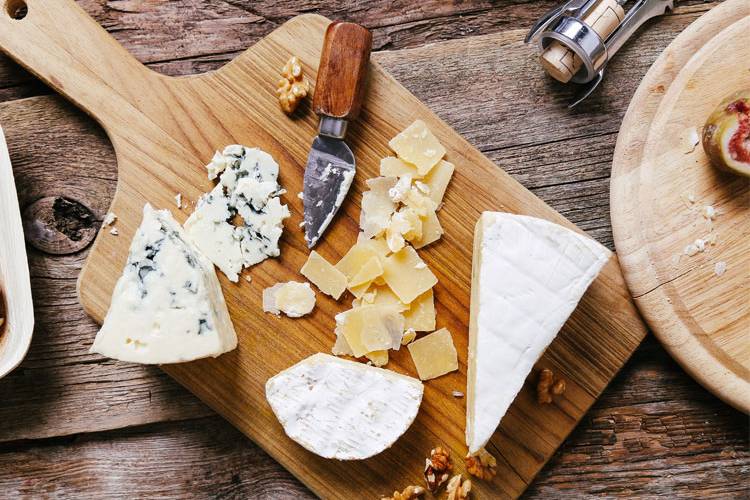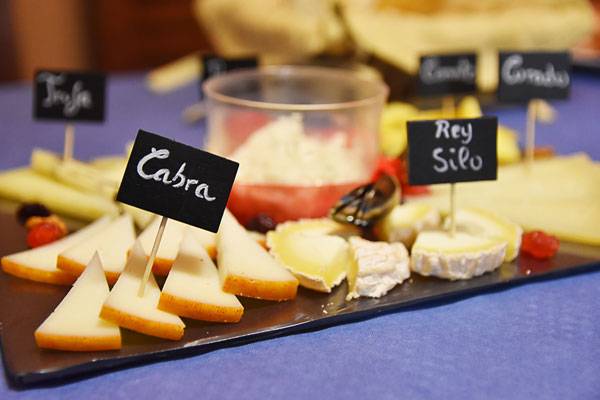How to prepare a perfect cheese board
Soft or strong? Fresh, soft or hard? Cow, sheep or goat’s? There are endless ways to prepare a cheese board, but to enjoy the taste of each cheese as it deserves, it is advisable to follow certain guidelines.
TRIED AND TESTED
Share

With cheeses, especially if one is a real cheese lover, there are really no rules. There is a cheese for each person, for each moment of the day, for each drink or for each mood. Despite being high in fat, cheese is a good friend. It is rich in calcium, protein and phosphorus, nutrients necessary for the proper functioning of bones and to strengthen the muscles. It also contains vitamins A, D, B12 and B2, that help protect the immune system and improve the nervous and cardiovascular systems. They say that it is necessary to eat cheese in moderation but moderation, when there is a Stilton, a Torta del Casar or a Comté, is an arduous task.
When preparing a cheese board, the first thing we must decide is the number of cheeses that will be included. There is no ideal number, although for variety, it is recommended to at least choose five types of cheese. Between five and eight cheeses would be a perfect number. It is important to consider the tastes of our guests before selecting them. Do they like strong flavours, prefer traditional ones, or are they willing to try something new?
The only thing to keep in mind when assembling the board is that the cheeses we choose complement each other.
Once this question is answered, you can select a criterion to guide the board: it may depend on the geographical area, textures or hardness, the type of milk used (cow, sheep or goat’s), maturity... This is a way to endow a certain sense to the cheese board, but it is not essential. We can simply follow our tastes. The only thing to keep in mind when assembling the board is that the cheeses we choose complement each other.
Once selected, it is essential to present them correctly. We should always start to taste cheeses from the mildest to the most intense, and from soft to hard. If we choose a round board, the order will be clockwise. If it is rectangular, always distribute them from left to right. The hard cheeses (Manchego, Idiazábal...) as well as those that are semi-hard or soft (the tetilla from Galicia or the Mahón de Menorca) are cut into wedges or tacos, while small, round French cheeses must be presented whole and spreadable cheeses can be left in their container.

BREAD AND FRUIT TO ACCOMPANY
Another aspect to take into account when preparing a cheese board, is what should accompany it. Bread, nuts, some fruit and even some jams, complement cheese perfectly and even help to lend different nuances. As for the types of bread, it will depend a lot on the selection of cheeses that we have made, but at least we should serve three different classes: white, cereal bread and toast. Nuts enhance the flavour of cheeses. Nuts, hazelnuts or cashews combine well with it, also dried figs, prunes and dates. If you want to accompany them with some fresh fruit, the best ones are grapes, apples and figs, as their acidic flavours help to clean the palate between cheeses. And for stronger cheeses, fruit jams or quince will help counteract the stronger flavours.
And if the communion between cheese and bread is unsurpassed, cheese and wine is the perfect marriage, one where the protagonists are as strong together as the first day, no matter how much time goes by. Red wine for cured cheese, white for the milder, sweet for the blue, fruity for the soft paste, sherry and champagne for young goat’s and fatty cow’s cheese… Artisan beers also go well with many cheeses, and the combinations are endless.
THE PERFECT MOMENT FOR CHEESE
As a starter, or at the end of the meal? The question of when to take the cheese board to the table is something on which opinion is divided. The most sensible thing to do when deciding is to take the menu into account. If it is very abundant, perhaps the best is to sample the cheeses at the beginning so that they are not wasted. If the food is light, you can have the cheeses at the end as dessert, as the French do. You could even use the cheese board as a main course and accompany it with another board of cold cuts.
And finally, another key factor is the temperature. Cheese must be at room temperature in order to enjoy all its organoleptic properties, so an hour before dinner or lunch, it is recommended to remove the cheeses from the refrigerator so that they are eaten at the ideal temperature.

Ten facts you never knew about Pizza
We tell you all about this universal dish
Ten facts you never knew about Pizza






